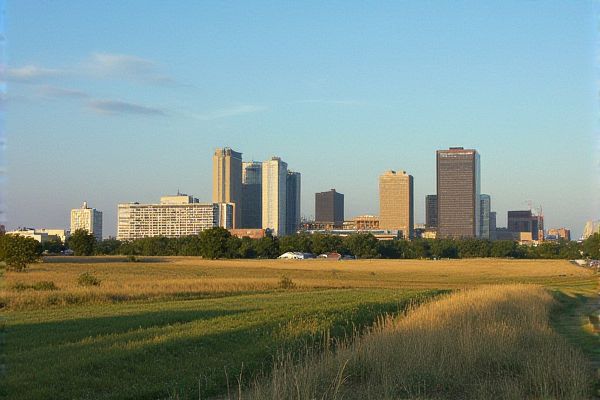
Weather and climate in Kansas: Humid continental climate. Hot summers, cold winters. Spring tornado season. Severe thunderstorms common. Snowfall varies regionally. Droughts occasional concern. Windy conditions prevalent. Rapid weather changes possible. Average annual rainfall: 30 inches. Mild autumn months.
Humid continental climate.
Kansas, particularly its eastern portion, falls under the Humid Continental climate type, characterized by hot and humid summers and cold winters, with significant seasonal temperature variations. To explore the detailed patterns of climate in Gypsum, Kansas, and how it affects agriculture, refer to the comprehensive lesson plan provided by NASA. This resource highlights how the distinct climatic features of this region influence both natural and human activities, especially in the context of agricultural practices.
Hot summers, cold winters.
Kansas experiences a continental climate characterized by hot summers, with average July temperatures around 81°F and highs often reaching 93°F, and cold winters, with January temperatures averaging 31°F and lows sometimes dipping to 20°F. For comprehensive insights into the climate patterns and seasonal variations, Visit Kansas Climate provides an in-depth exploration of all you need to know about the climate in the state.
Spring tornado season.
In Kansas, the peak tornado season typically occurs from mid to late April through mid June, with the highest frequency around May 22-23, driven by the optimal conditions of warm weather and vertical wind shear. For further information on tornado facts and safety tips, you can visit the National Weather Service.
Severe thunderstorms common.
Kansas experiences an average of 40-60 thunderstorm days per year, with severe thunderstorms defined by the National Weather Service as those producing hail at least 3/4 inch in diameter, winds of 58 mph or higher, or tornadoes. These storms can occur year-round but are most common in the late afternoon and night during the spring and summer months. For more detailed insights on these weather phenomena and how to prepare for them, visit the Prepare Metro KC website. By staying informed and prepared, residents can better protect themselves and their properties from the potential dangers of severe thunderstorms.
Snowfall varies regionally.
Snowfall in Kansas varies significantly across different regions, with the highest annual snowfall typically occurring in the northwest, ranging from 28 to 42 inches, and the lowest in the southeast, often less than 12 inches. This variation is influenced by both latitude and elevation, with western Kansas experiencing more snow due to its higher elevations and the eastern part receiving more winter moisture in the form of rainfall. For more detailed information, you can check the Kansas Geological Survey publication which discusses these variations in detail.
Droughts occasional concern.
Droughts are a significant and recurring concern in Kansas, with western Kansas experiencing more frequent and severe droughts than eastern Kansas due to a strong climate gradient. Historical data indicate that droughts in Kansas can be long-lasting, with some periods, like the 1930s and 1950s, being particularly severe. There is a high probability of severe droughts occurring every few decades, especially in the western regions. For more information on drought patterns and historical occurrences, you can explore the detailed report available in the Kansas Geological Survey, which provides an in-depth look at the climate challenges faced by the state.
Windy conditions prevalent.
In Kansas, windy conditions are prevalent, particularly in the western half of the state, which is one of the windiest inland areas in the country. The windiest months are March and April, with significant variations in wind velocity throughout the day. Prevailing winds come from the south during the summer and from the north or northwest during the winter. For more detailed information on Kansas's wind conditions, visit the publication available from Kansas State University.
Rapid weather changes possible.
In Kansas, winter conditions can change rapidly, with temperatures dropping by 50 degrees in just a couple of hours or transitioning quickly from clear skies to heavy snow, highlighting the state's unpredictable weather patterns. For more detailed insights on how to navigate these challenges, visit the article on Winter Conditions Travel on HPJ. This resource provides valuable information to help residents and travelers alike prepare effectively for the changing weather dynamics in the region.
Average annual rainfall: 30 inches.
In Kansas, average annual rainfall varies significantly across the state, but a general average of around 30 inches is not universal; Eastern Kansas receives over 40 inches, Central Kansas around 28-35 inches, and Western Kansas less than 20 inches annually. For more detailed information on precipitation, please visit the website on Average Yearly Precipitation in Kansas.
Mild autumn months.
In Kansas, the autumn months are characterized by significant variability in temperatures, with the first light freeze typically occurring between late September and late October, depending on the region. For example, west-central Kansas often experiences its first light freeze between September 28 and October 27, while south-central Kansas sees it between October 7 and November 4. To learn more about these patterns, visit the National Weather Service website.
